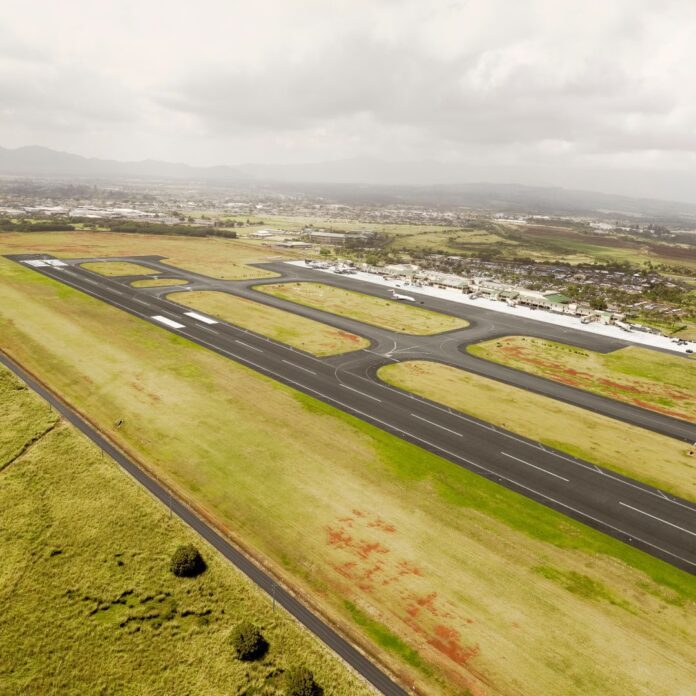Hilo International Airport (ITO) serves as the gateway to the rainy, lush eastern side of Hawai’i’s Big Island. With its laid-back charm and simple layout, this airport makes traveling to and from Hilo a breeze.
I have passed through the Hilo Airport dozens of times, usually on the way to Ken’s or Volcano National Park, let’s explore everything you need to know, from arrival to departure, rideshare to rental car.
Key Information
Airport: Hilo International Airport (ITO)
Terminals: 2, including Terminal 1 (main terminal) and a small commuter terminal
Airport Address: 2450 Kekuanaoa Street, Hilo, HI 96720
Distance From Hilo: 3 miles (5 km)
Website: airports.hawaii.gov/ito
Phone Number: 808-961-9400
Destinations Served: Direct flights to Honolulu, Kahului, Los Angeles, and more
Flight Information: View arrivals and departures here
Arriving at Hilo International Airport
Upon landing at ITO, you’ll step off the plane via a jetway (a distinct feature compared to Kona’s open-air ramps). Signage is clear and intuitive, guiding you down a short walk to the baggage claim area. Elevators, escalators, and stairs are conveniently located for all travelers.
If you are arriving from a larger airport, Honolulu included, prepare to slow down a bit.

Baggage Claim:
Located on the ground level, near the exits to curbside pickup and rental car facilities.
For assistance with lost baggage, visit the Hilo International Airport Lost & Found.
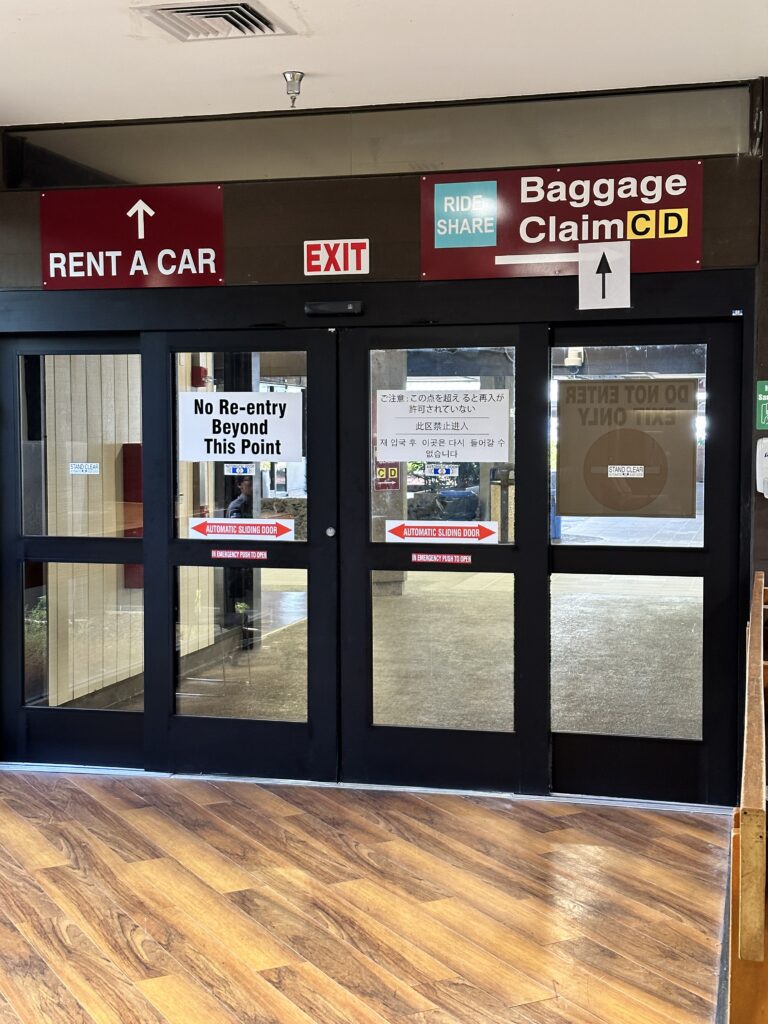
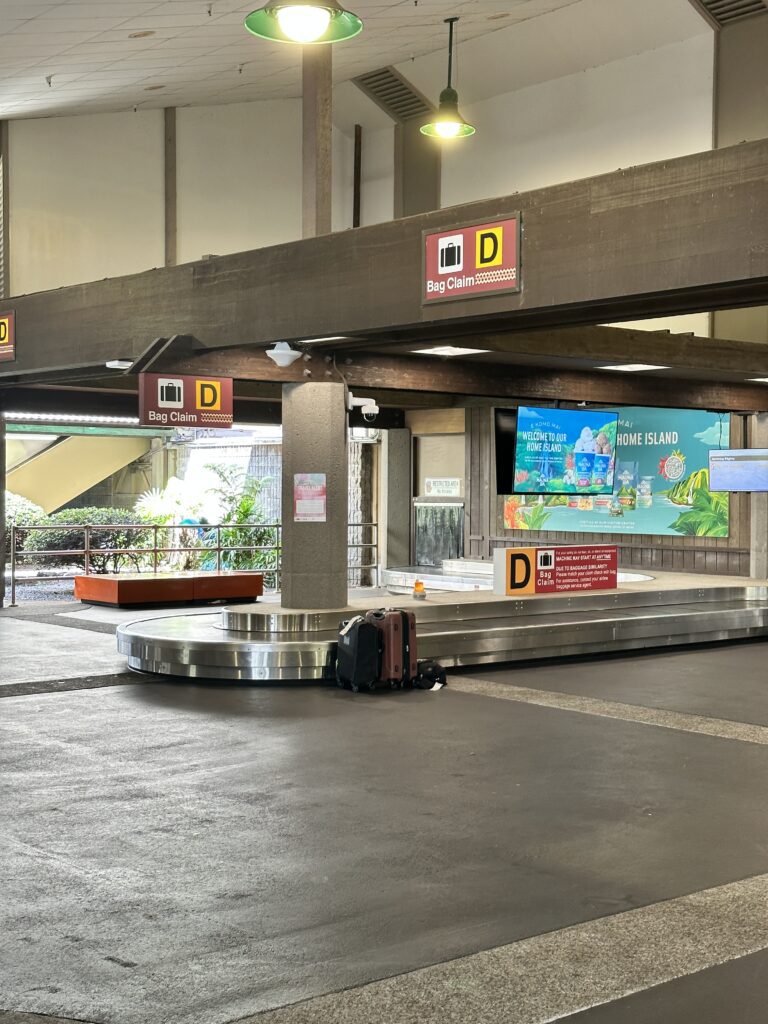
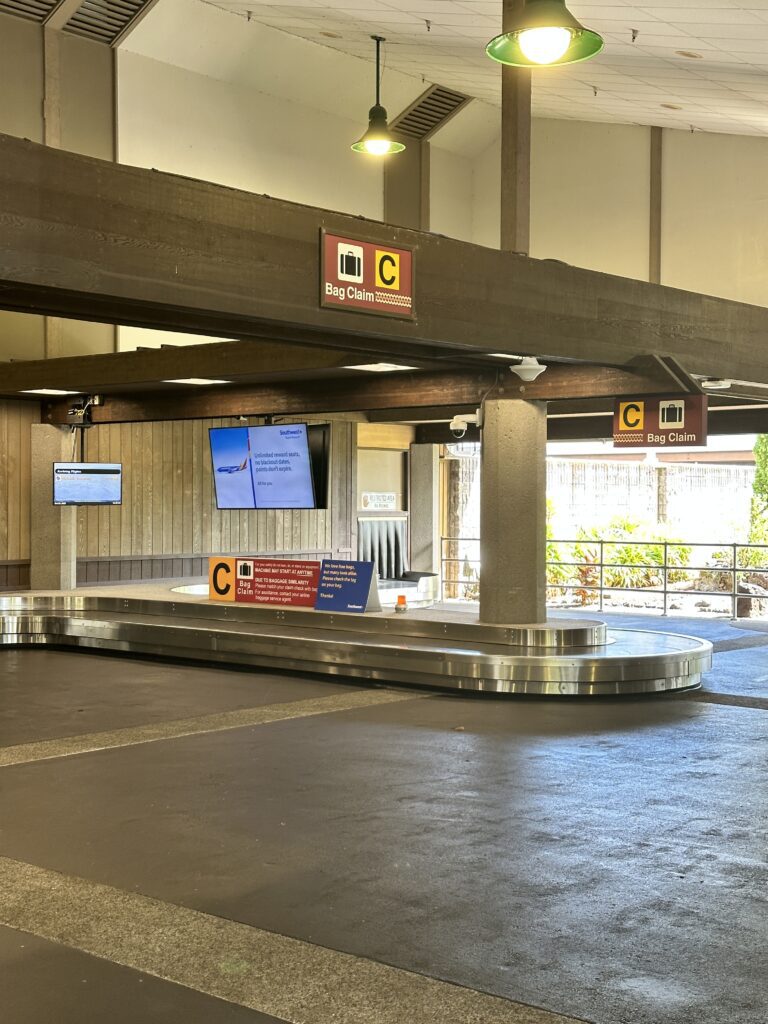
Car Rentals at Hilo International Airport
Renting a car at Hilo International Airport is straightforward and convenient. The rental car facility is located a short walk from the baggage claim area. As you exit the terminal, follow the clearly marked signs directing you toward the rental car lot.
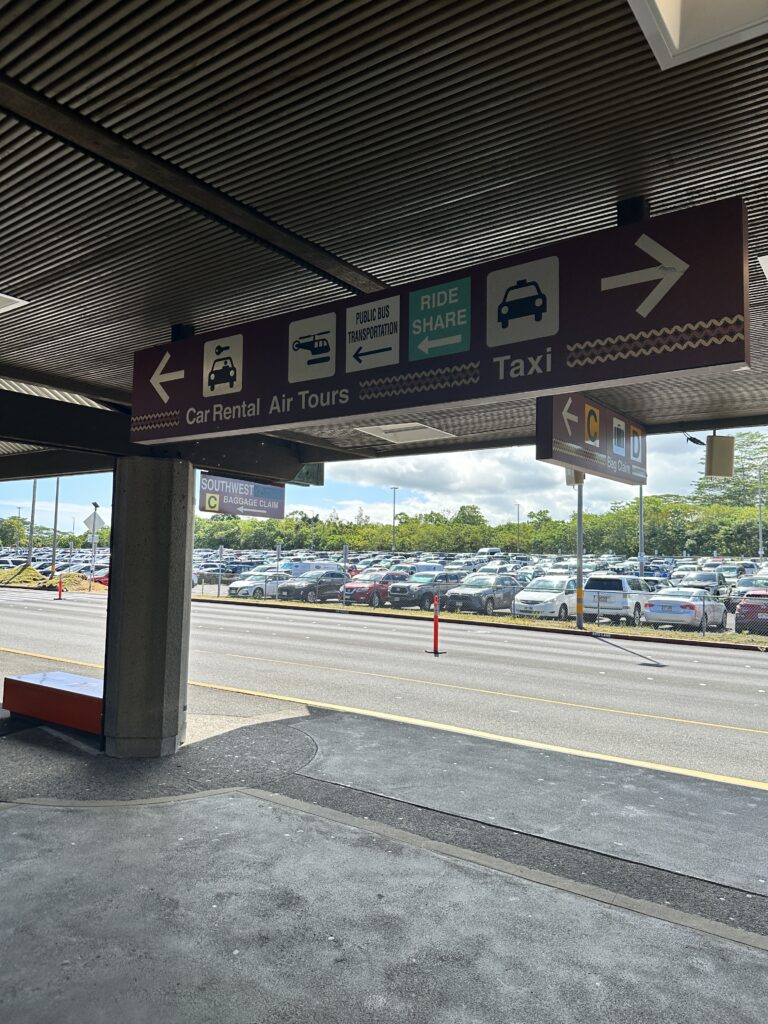
Rental Companies Available: Major brands like Hertz, Avis, Enterprise, and Budget operate here, offering a wide range of vehicle options from compact cars to larger SUVs.
Pick-Up Process: Once you’ve completed your rental agreement at the counter, you can retrieve your vehicle from the nearby lot, right behind the desk area.
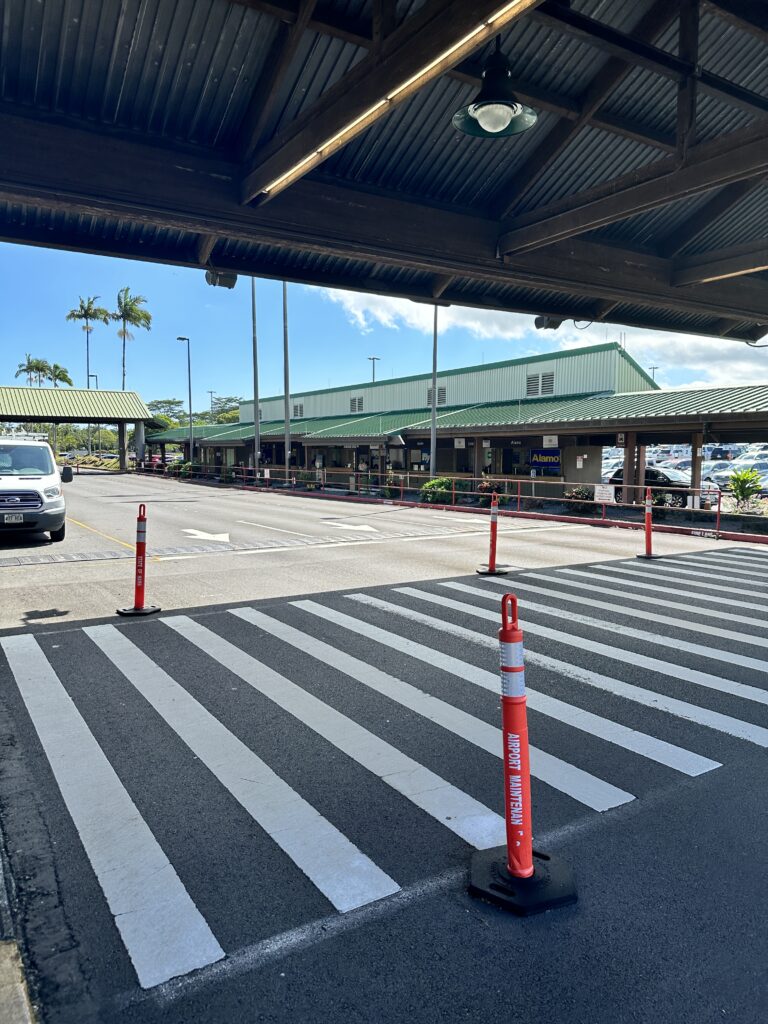
Returning Your Vehicle: When departing, stay in the left-hand lane to enter the rental car return area. This will be the same lot you picked up your vehicle from, very straightforward. Covered sidewalks lead from the lot to the terminal, providing easy access even during Hilo’s frequent rain showers.
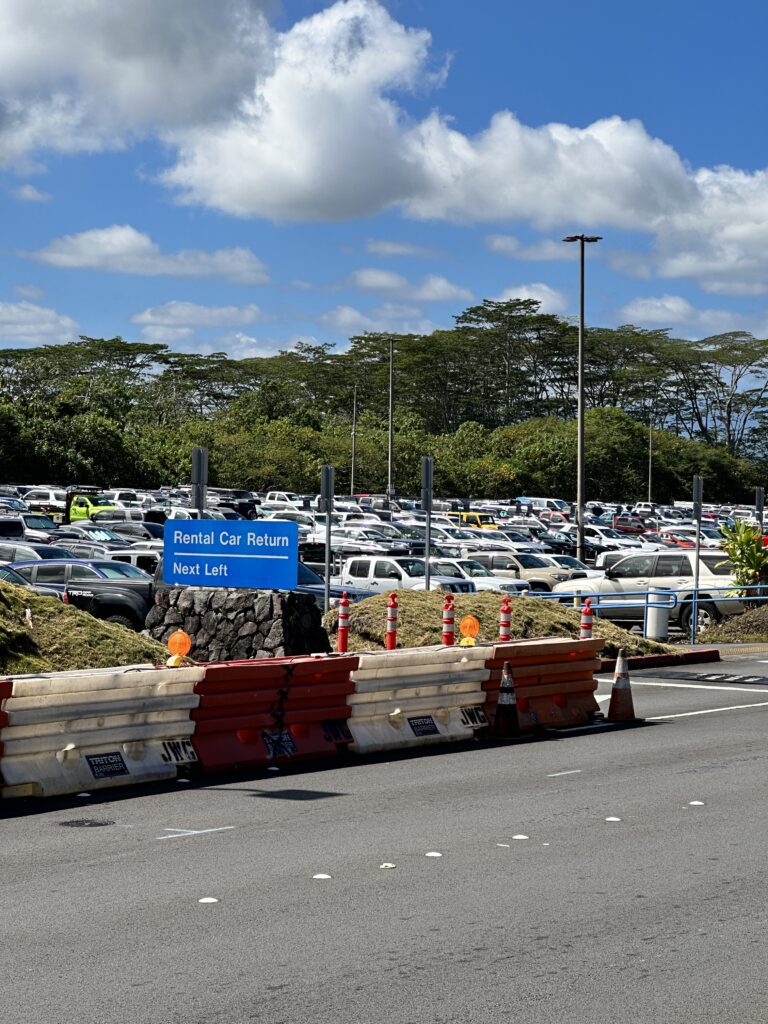
RideShare services like Uber and Lyft operate at Hilo International Airport, providing a convenient alternative to rental cars or taxis.
Pick-Up Location: After collecting your baggage, head to the designated RideShare pickup zone located at the curbside. Look for signs marked “RideShare Pickup” to ensure you’re in the correct spot.
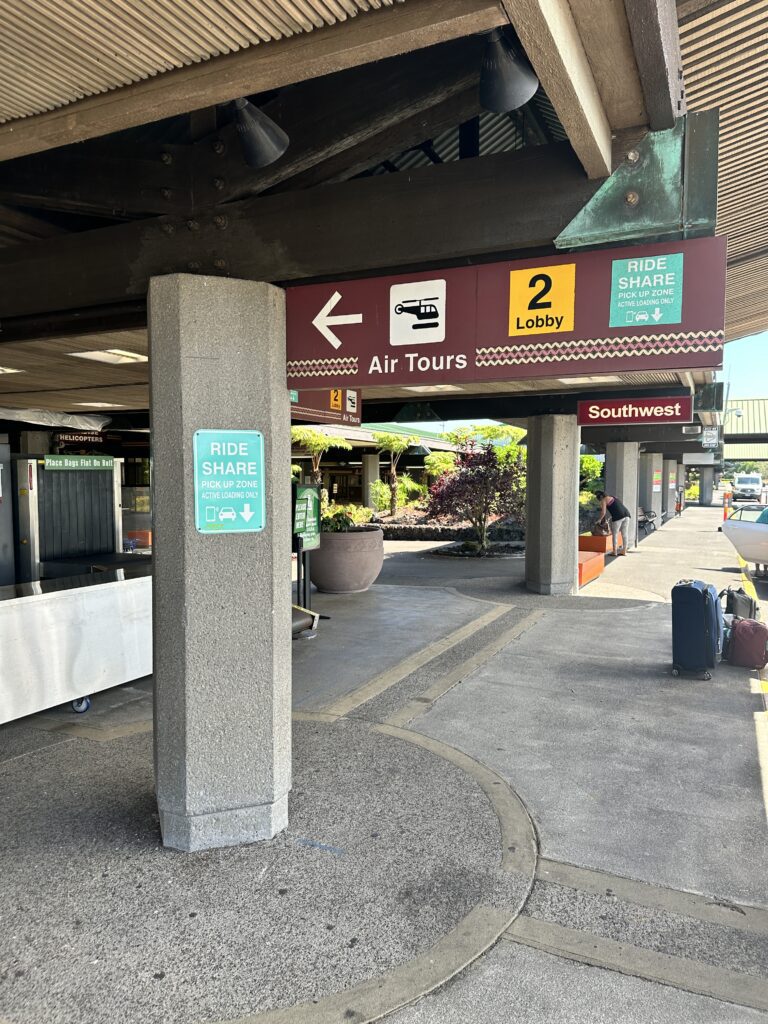
Driver Instructions: To streamline the process, confirm your location with your driver and wait at the designated zone. This helps maintain traffic flow and avoids confusion during busy times.
Estimated Costs: RideShare fares to popular destinations:
Downtown Hilo: Approximately $10–$15 (3 miles)
Hawai’i Volcanoes National Park: Around $40–$60 (30 miles)
Mauna Kea Visitor Information Station: $60–$80 (33 miles)
Keep in mind that RideShare availability may vary based on flight schedules, so plan accordingly if arriving or departing late at night.
Public Transportation at Hilo International Airport
While Hilo’s public transportation options are limited, the Hele-On Bus provides a cost-effective way to travel around the Big Island.
Hele-On Bus Pickup: The bus stop is located just past the RideShare pickup zone, with signage on the pillars indicating schedules and routes.
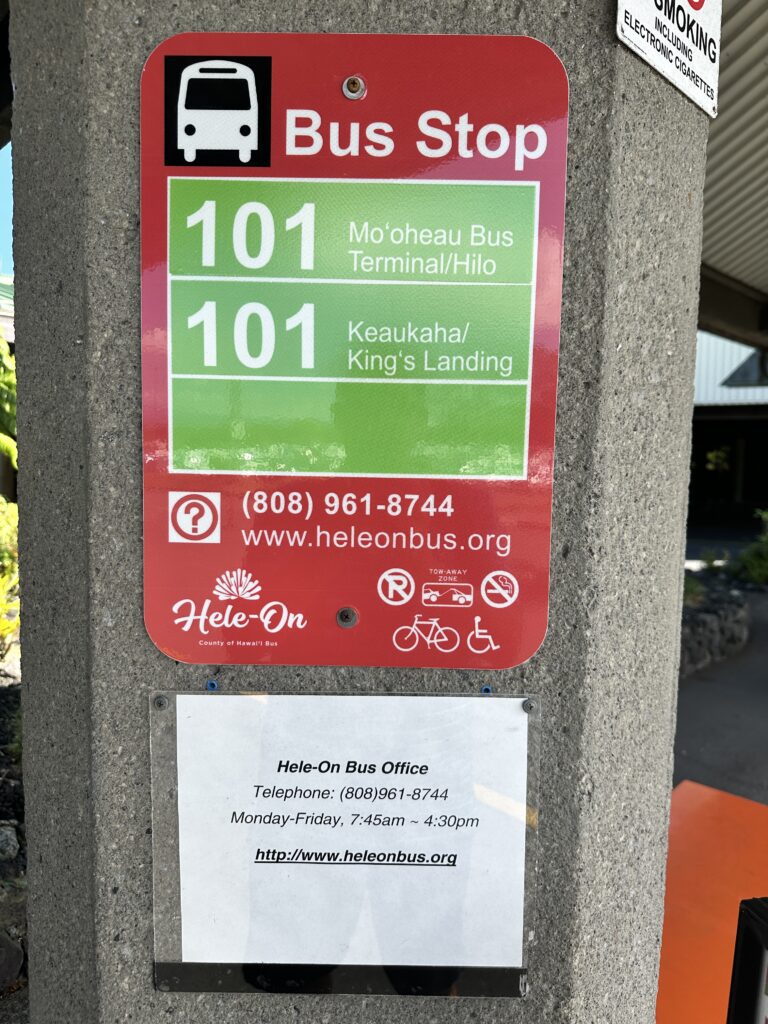
Routes Available:
Service to downtown Hilo and nearby neighborhoods.
Connections to longer routes covering destinations like Kailua-Kona and Waimea.
Schedule and Frequency: The Hele-On Bus operates on a limited schedule, so be sure to check the latest timetable in advance on their website.
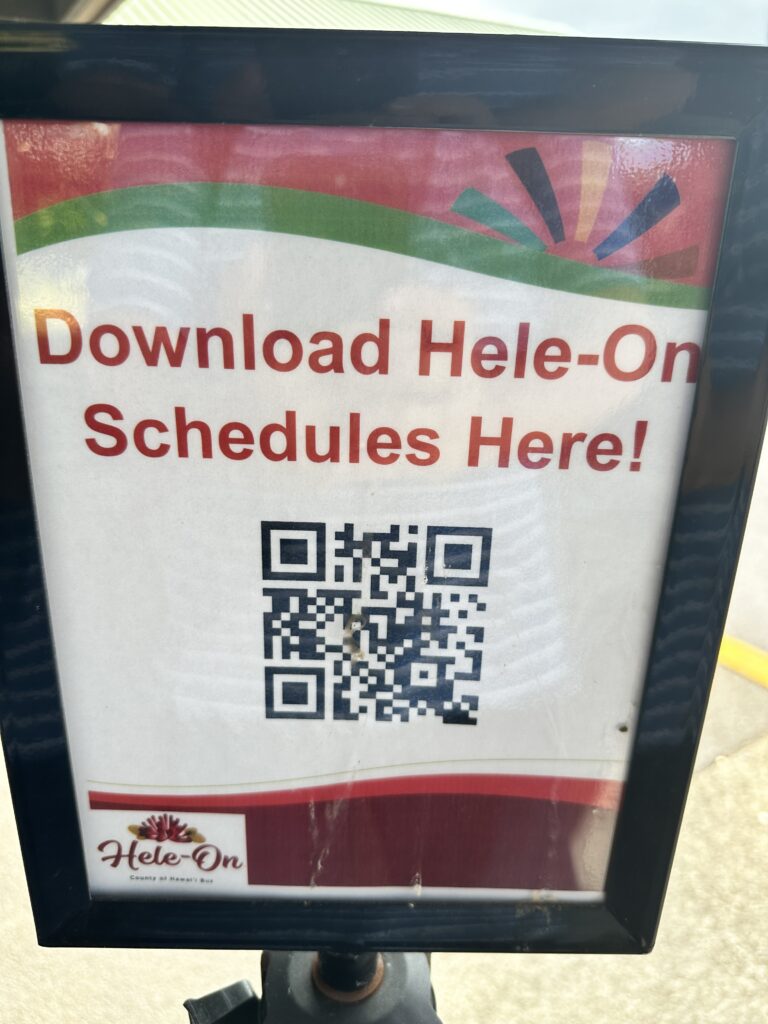
Important Notes:
Public transportation is best suited for budget travelers with flexible schedules.
If you’re planning to explore areas like Hawai’i Volcanoes National Park or the Hamakua Coast, a rental car or RideShare is a more practical option due to limited bus routes and infrequent service.
Departing from Hilo International Airport
Leaving Hilo is simple and stress-free. If driving, follow signs to the rental car return, which is adjacent to the terminal. Sidewalks are wide and covered—an essential feature given Hilo’s frequent rain.
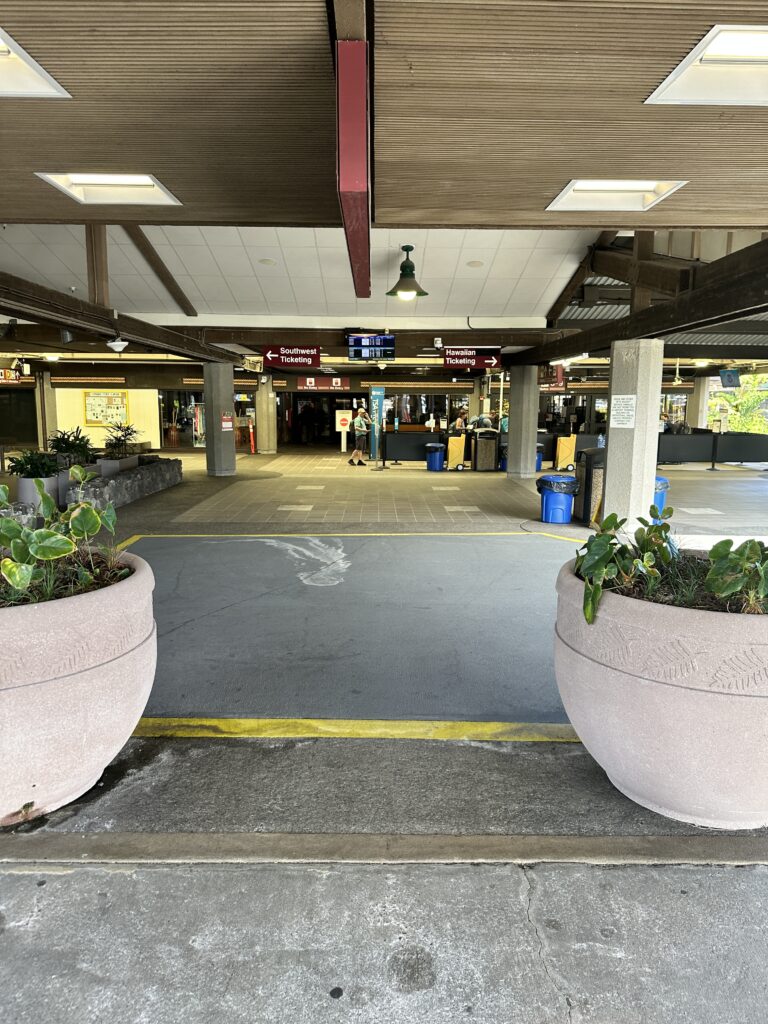
Check-In and Security:
Hawaiian Airlines and Southwest Airlines dominate the ticketing counters.
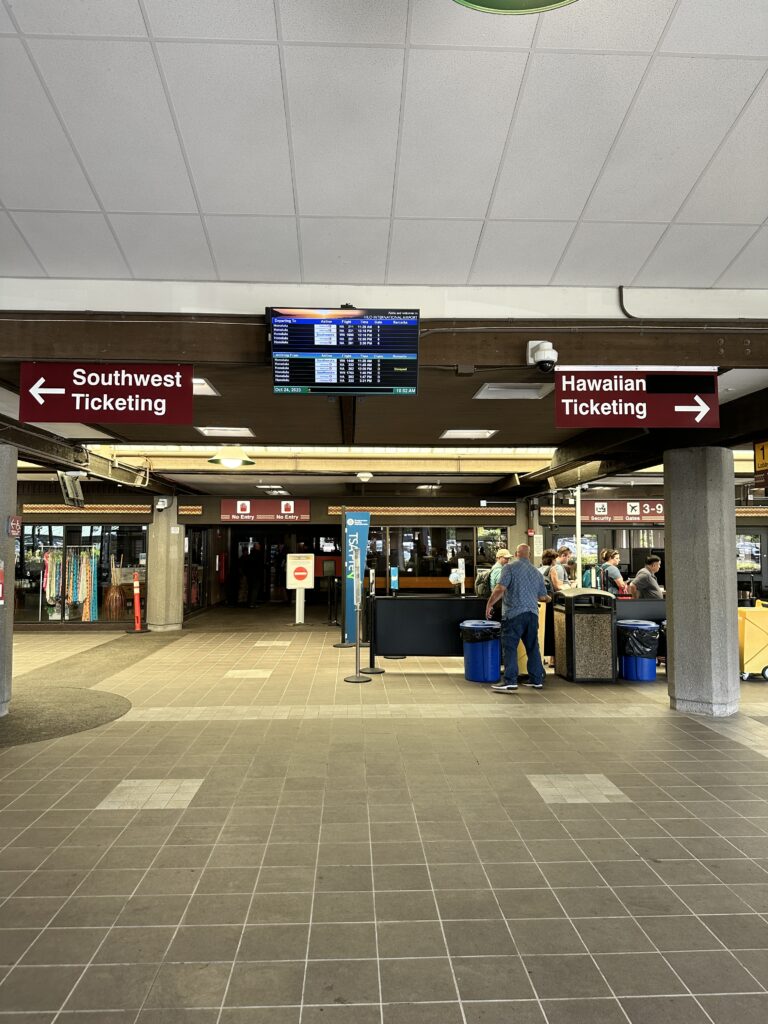
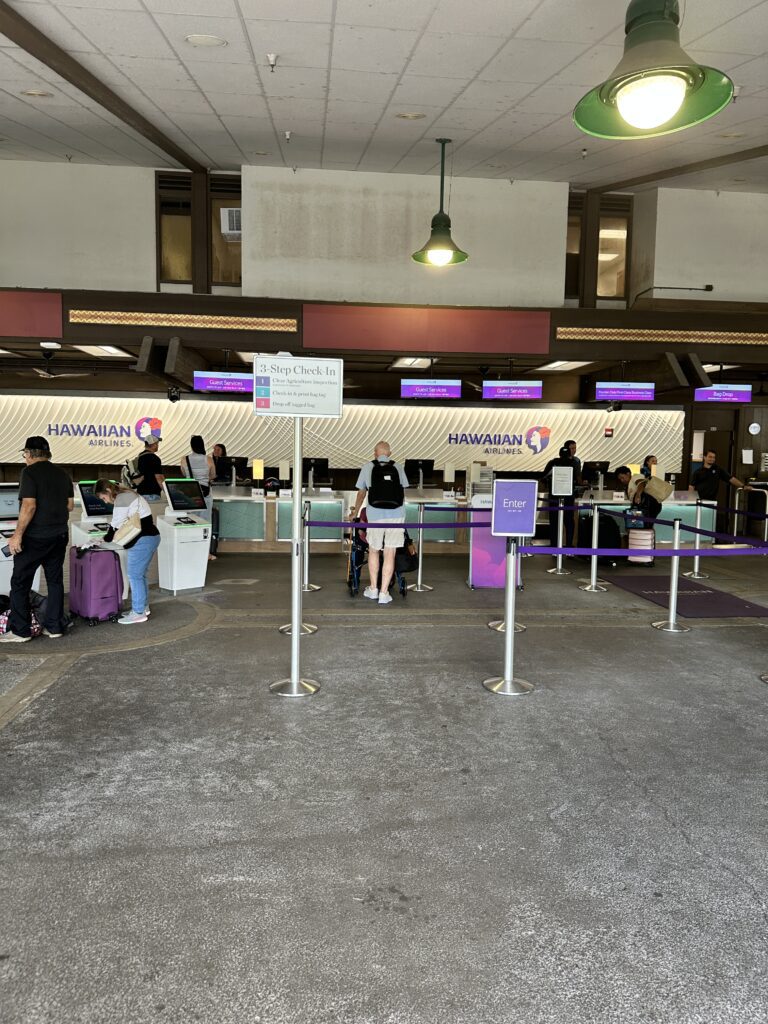
A single TSA checkpoint serves all gates, ensuring short wait times, however….when the system goes down or there is a problem expect very long wait times.
Remember if you are flying to the US Mainland from the Hilo International Airport you need to clear the agricultural inspection station. Detailed rules for departing and arriving can be found here in regards to food and other items.
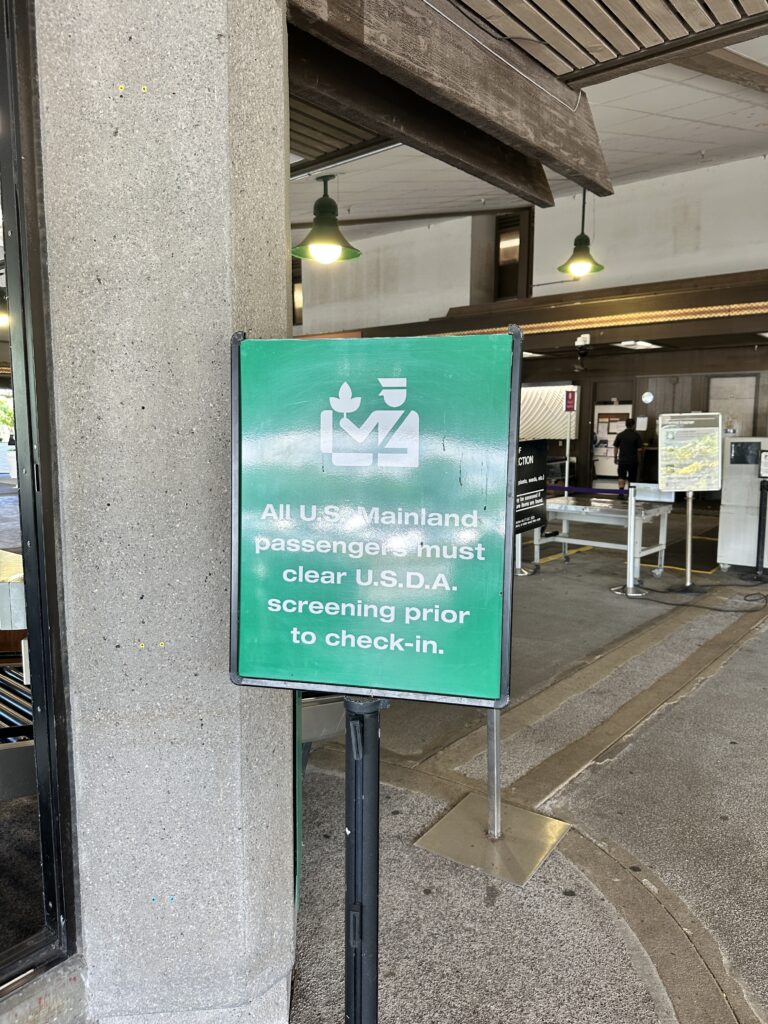
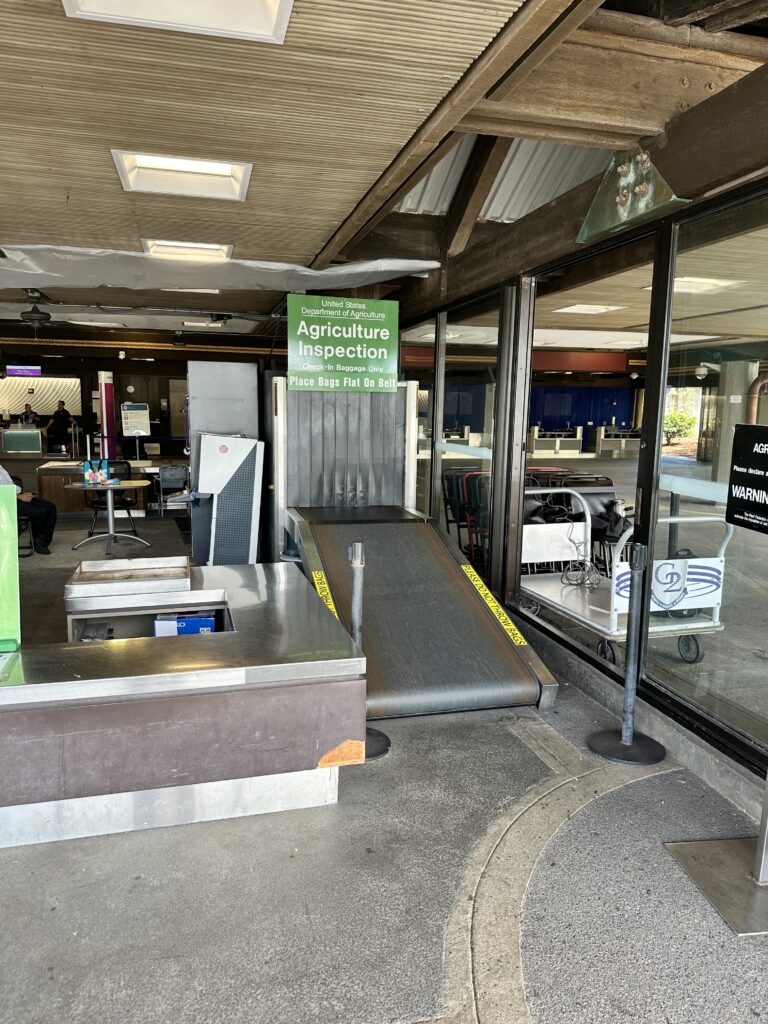
Once through security, you’ll find yourself on the ground level which includes seating and a few snack options. I recommend relaxing here before heading up to your gate, much more comfortable.
Dining and Amenities
Hilo Airport dining options are very limited so plan ahead if you think this will be important when passing through. Downtown Hilo is very close so keep that in mind, with that said here is where you can grab a quick bite to eat.
Laniakea Express
Located outside the secure area for grabbing a quick bite or refreshing drink before heading through security. It offers a variety of local foods, cold beverages, and snacks to go.
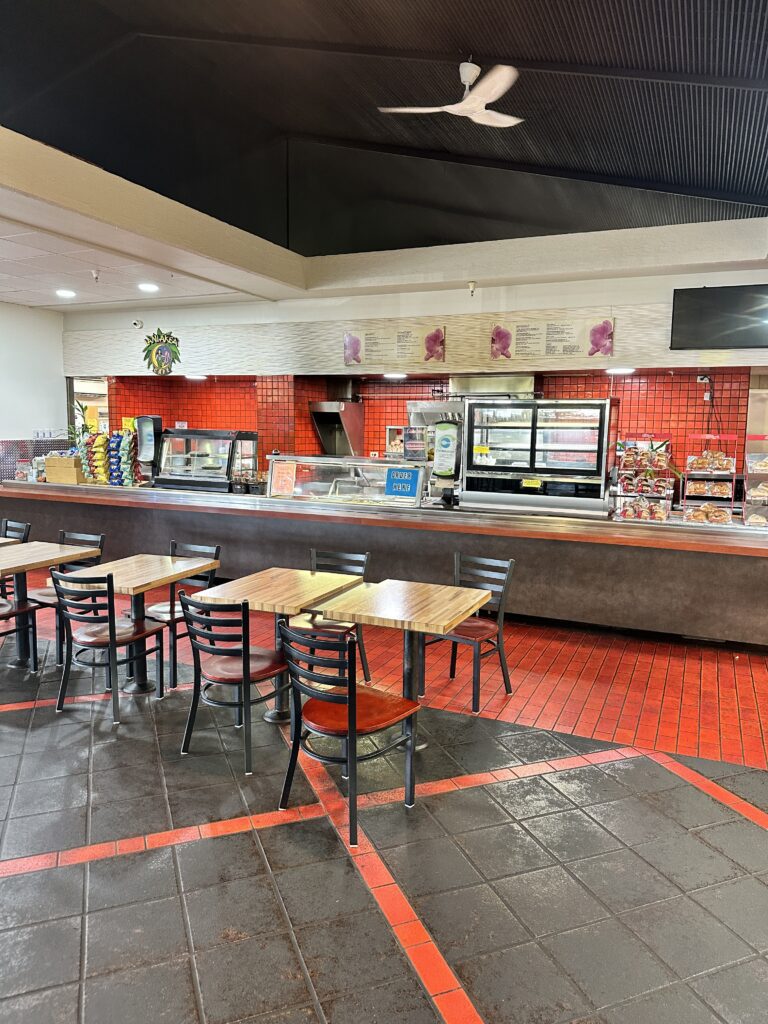
Laniakea Café
Found inside the terminal, this café serves the same excellent local foods and drinks, making it a great option for passengers who have already cleared security.

| Dining Option | Location | Open Time | Close Time |
|---|---|---|---|
| Laniakea Express | Outside secure area | 8:00 a.m. | 4:00 p.m. |
| Laniakea Café | Inside the terminal | 5:30 a.m. | 8:00 p.m. |
Shopping: Small gift shops featuring Hawaiian souvenirs and travel essentials.


Pet Relief Station: A unique indoor pet relief area with a faux fire hydrant. Learn more here.
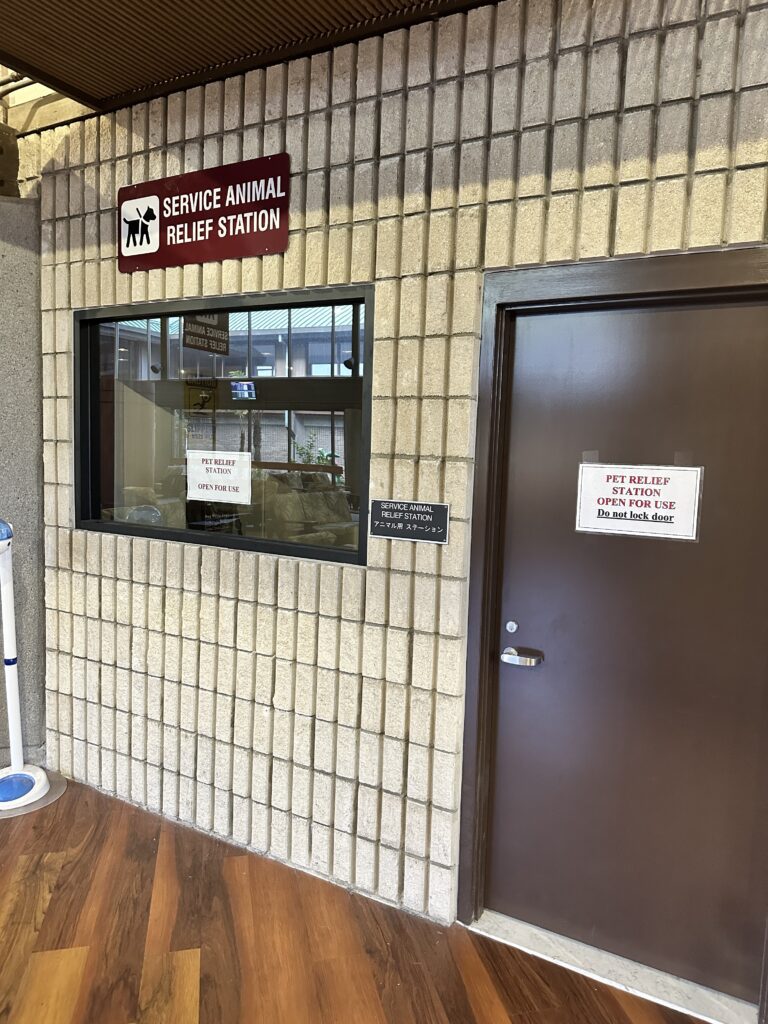
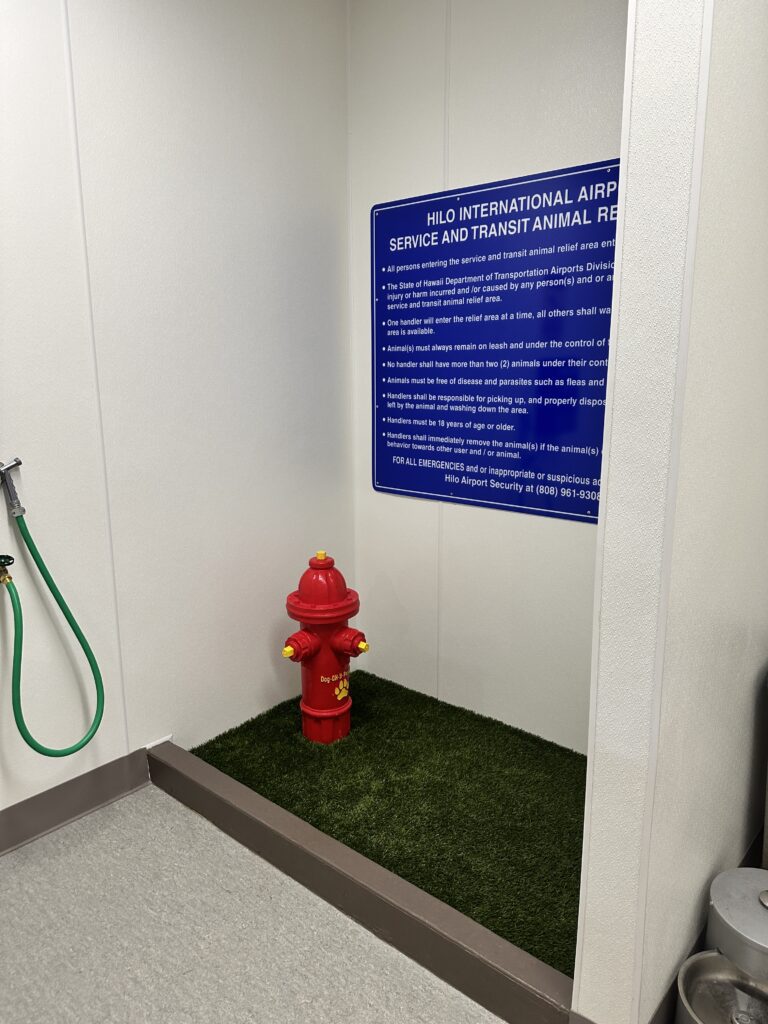
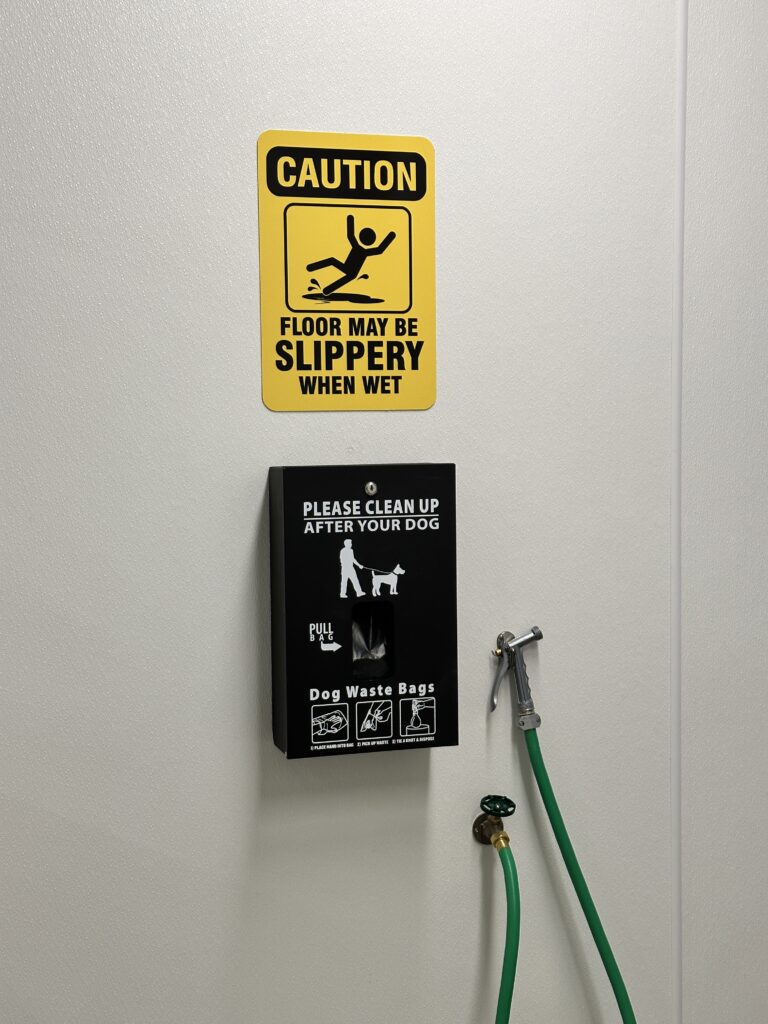
Free Wi-Fi at Hilo International Airport
How To Connect to the Network
Open your device’s WiFi settings.
Select the network named Boingo Hotspot or HiloWiFi.
Launch a Web Browser
Open any web browser on your device.
Start Your Free Session
On the browser’s landing page, select Free Unlimited WiFi to begin your session.
Luggage Storage & Lockers At Hilo International Airport
Unfortunately, luggage storage and locker facilities are not available at Hilo International Airport due to enhanced airport security requirements. Travelers should plan accordingly if they need to store their luggage during their visit to Hilo.
If you’re searching for luggage storage options in Hawai‘i, you might find my detailed guide helpful: How to Find Luggage Storage in Hawai‘i. However, I don’t even include Hilo Airport in that guide because the nearest storage option through Bounce is located in Pāhoa, not Hilo itself. You can see the Pāhoa storage listing here: Bounce Luggage Storage in Pāhoa.
This ongoing lack of convenient luggage storage solutions at or near Hilo Airport can be a challenge for travelers. If you’re visiting the island, it’s a good idea to coordinate your plans with your accommodations or explore off-site storage options in nearby towns like Pāhoa.
Exploring the Commuter Terminal
A short walk from the main terminal, the commuter terminal serves Mokulele Airlines and helicopter tours. It’s minimal, with just two gates, but functional for quick interisland flights.
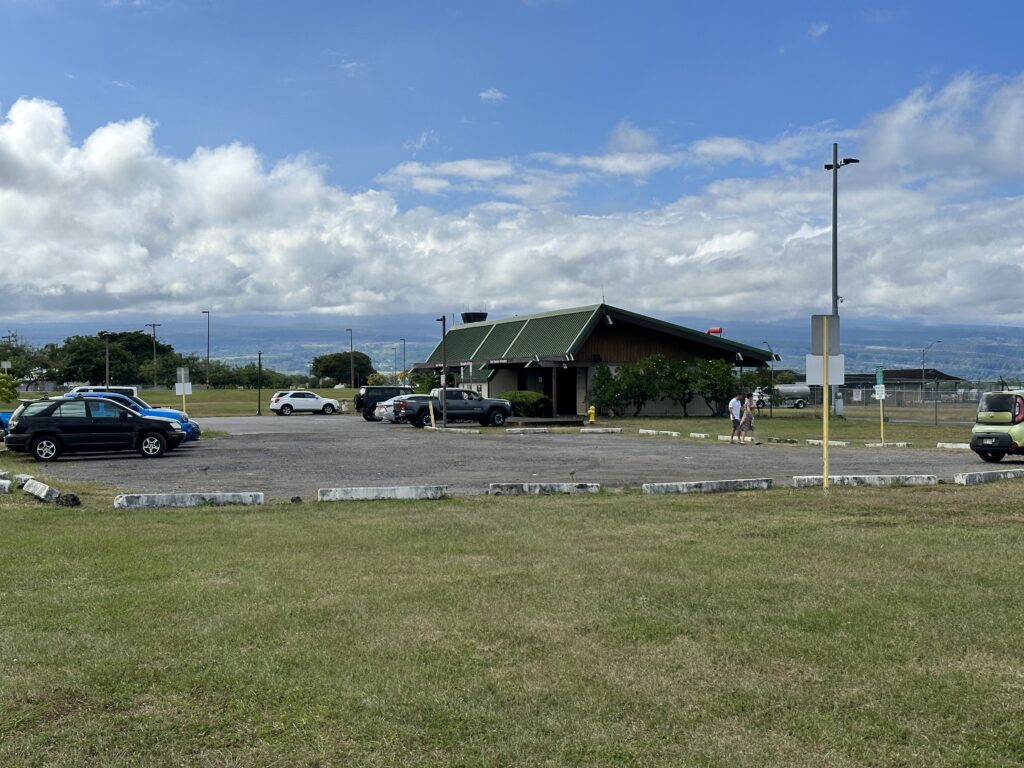
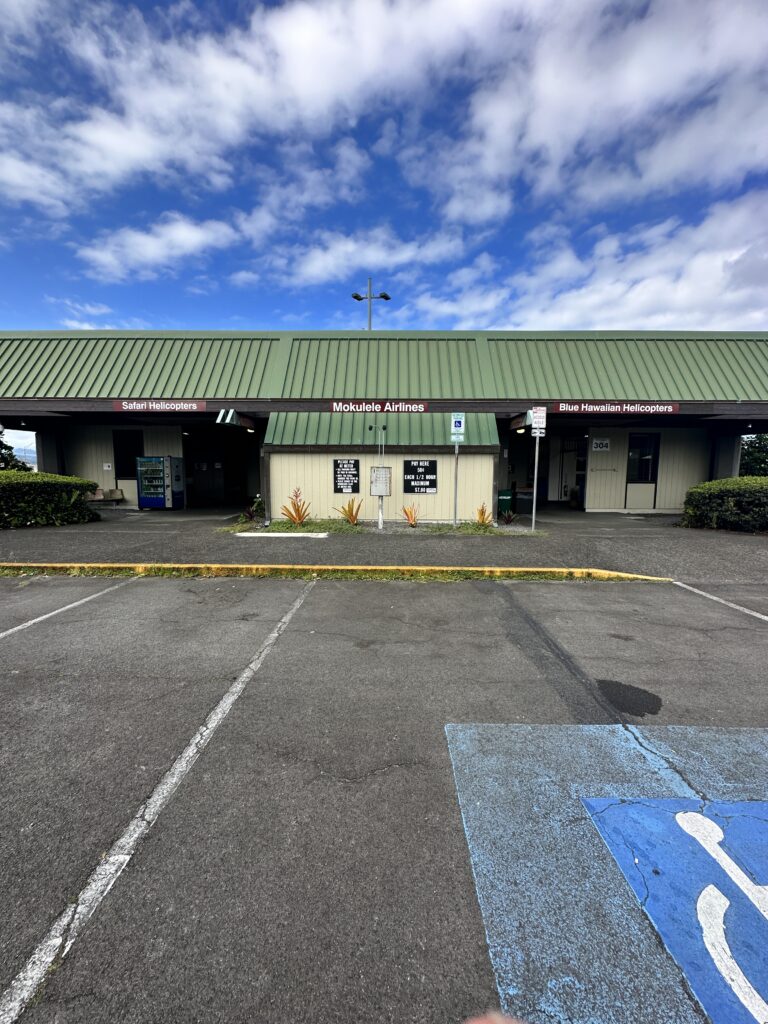
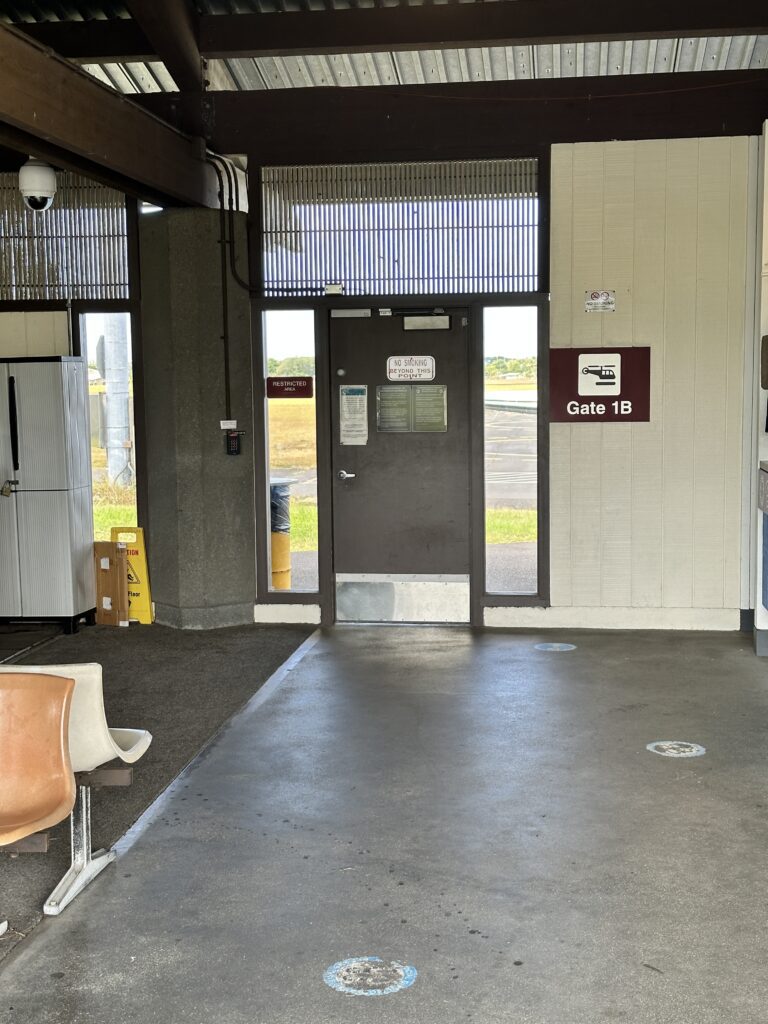
Parking and Accessibility
Parking Rates: Hourly and daily parking are available, with updated rates as of February 2024. View details here.
Accessibility: Elevators, ramps, and other amenities for passengers with disabilities are available. Learn more here.
History and Atmosphere
Hilo International Airport holds a nostalgic charm, with cushioned seating and local touches that reflect the Big Island’s relaxed vibe. It also features historical displays about its development over the years, offering travelers a glimpse into its past.
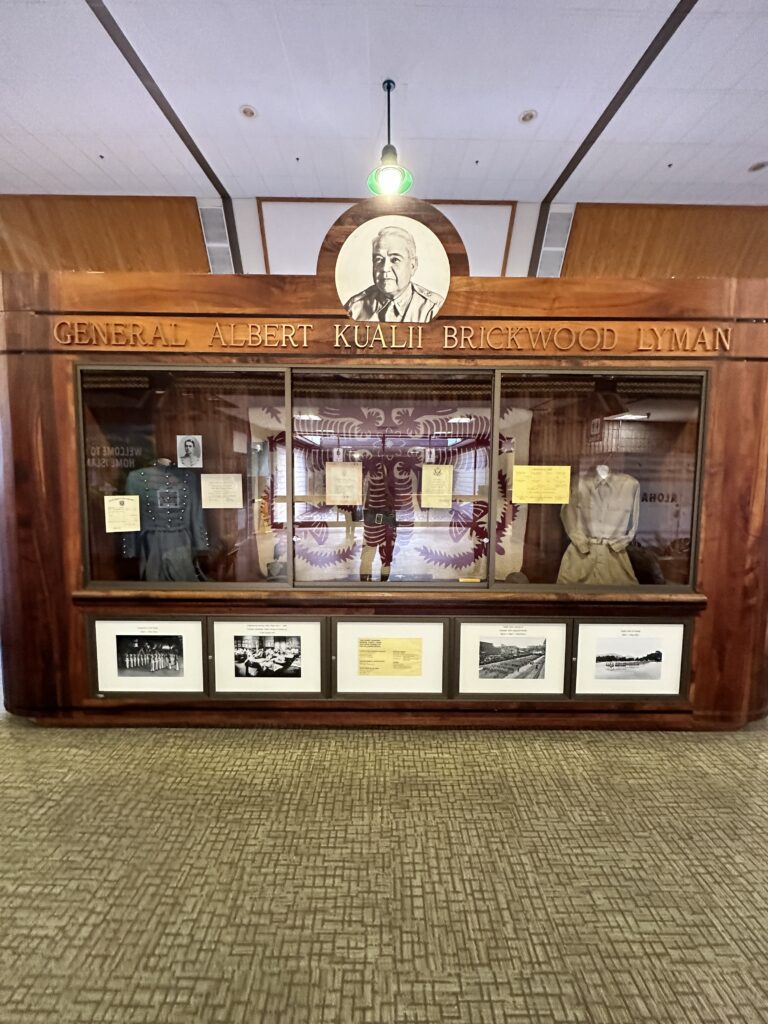
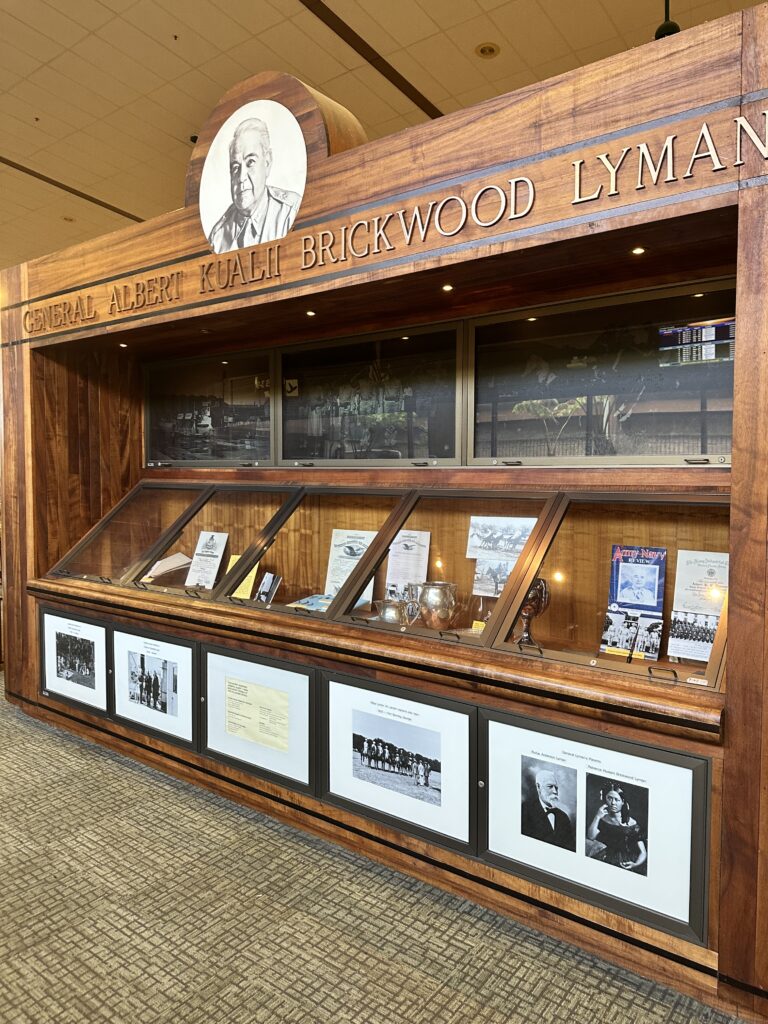
Early Development: In the 1920s, the Territorial Aeronautical Commission initiated the development of Hilo Airport. By February 1928, the airport was operational, marked by the dedication ceremony attended by Major Clarence M. Young, then Secretary of Aeronautics for the U.S. Department of Commerce.
World War II Era: During World War II, the U.S. military took control of Hilo Airport, utilizing it as a military airfield and logistics base for training and defense preparedness.
Post-War Expansion: Following the war, the airport underwent significant improvements and expansion to accommodate increasing commercial air traffic. In 1953, a new terminal was dedicated to enhance passenger services.
Renaming: In 1989, the airport’s name was changed from General Lyman Field to Hilo International Airport, while the main passenger terminal retained the General Lyman name in honor of Brigadier General Albert Lyman, the first person of Hawaiian ancestry to attain such rank in the U.S. Army.
The ITO airport designation for Hilo International Airport has an interesting backstory rooted in aviation history and logistical choices.
Origin of the Code: Originally, Hilo Airport’s code was “HIL,” which directly referenced the town of Hilo. This followed the pattern of many early airport codes that used the first three letters of their city’s name.
Transition to “ITO”: When Hilo’s airport expanded and became General Lyman Field, it adopted the ITO code. The change was made to avoid confusion with another airport using a similar code (such as HLG, Hillsgrove Airport in Rhode Island, which was later renamed T.F. Green Airport). “ITO” was chosen as a new identifier, though it doesn’t directly relate to Hilo’s name.
Some speculate it was selected to align with aviation naming conventions of the time, ensuring uniqueness in the global airport network.
Why Doesn’t It Reference Hilo? Many airport codes, especially older ones, don’t always align perfectly with their city or airport names. As air travel expanded and more airports were added worldwide, unique codes became necessary. Hilo’s transition to ITO ensured it had a distinct designation.
Compare to Kona International Airport
Looking for a guide to Kona International Airport on the opposite side of the island? Check out my Kona International Airport Guide for a complete comparison of these two key travel hubs.

